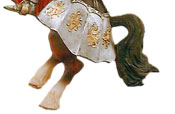| Dockings and Events |
|
| Museum Ship in Nuremberg starts on 10.08. till 02.09.2012 |
 |
Our Location: Gebersdorf Steiger der Neptun Personenschifffahrt Nähe Aischweg

Nuremberg (German: Nürnberg German pronunciation: [ˈnʏɐ̯nbɛɐ̯k] is a city in the German state of Bavaria, in the administrative region of Middle Franconia. Situated on the Pegnitz river and the Rhine–Main–Danube Canal, it is located about 170 kilometres (110 mi) north of Munich and is Franconia's largest city. The population (as of December 2010) is 505,664. The "European Metropolitan Area Nuremberg" has 3.5 million inhabitants.

Middle Ages

Nuremberg was probably founded around the turn of the 11th century, according to the first documentary mention of the city in 1050, as the location of an Imperial castle between the East Franks and the Bavarian March of the Nordgau. From 1050 to 1571, the city expanded and rose dramatically in importance due to its location on key trade routes. King Conrad III established a burgraviate, with the first burgraves coming from the Austrian House of Raab but, with the extinction of their male line around 1190, the burgraviate was inherited by the last count's son-in-law, of the House of Hohenzollern. From the late 12th century to the Interregnum (1254–73), however, the power of the burgraves diminished as the Hohenstaufen emperors transferred most non-military powers to a castellan, with the city administration and the municipal courts handed over to an Imperial mayor (German: Reichsschultheiß) from 1173/74. The strained relations between the burgraves and the castellan, with gradual transferral of powers to the latter in the late-14th and early-15th centuries, finally broke out into open enmity, which greatly influenced the history of the city.]

Nuremberg is often referred to as having been the 'unofficial capital' of the Holy Roman Empire, particularly because Reichstage (Imperial Diets) and courts met at Nuremberg Castle. The Diets of Nuremberg were an important part of the administrative structure of the empire. The increasing demand of the royal court and the increasing importance of the city attracted increased trade and commerce to Nuremberg. In 1219, Frederick II granted the Großen Freiheitsbrief (Great Letter of Freedom), including town rights, Reichsfreiheit (or Imperial immediacy), the privilege to mint coins and an independent customs policy, almost wholly removing the city from the purview of the burgraves.[3][4] Nuremberg soon became, with Augsburg, one of the two great trade centers on the route from Italy to Northern Europe. In 1298, the Jews of the town were accused of having desecrated the host and 698 were slain in one of the many Rintfleisch Massacres. Behind the massacre in 1298 was also the desire to combine the northern and southern parts of the city, which were divided by the Pegnitz river. The Jews of the German lands suffered many massacres during the plague years. In 1349 Nuremberg's Jews were subjected to a pogrom.The plague was also present in 1405, 1435, 1437, 1482, 1494, 1520 and 1534.

The largest gains for Nuremberg were in the 14th century; including Charles IV's Golden Bull of 1356, naming Nuremberg as the city where newly-elected kings of Germany must hold their first Reichstag, making Nuremberg one of the three most important cities of the Empire.[3] Charles was the patron of the Nuremberg Frauenkirche, built between 1352 and 1362 (the architect was likely Peter Parler), where the Imperial court worshipped during its stays in Nuremberg. The royal and Imperial connection was strengthened when Sigismund of Luxembourg granted the Imperial regalia to be kept permanently in Nuremberg in 1423, where they remained until 1796, when the advancing French troops required their removal to Regensburg and thence to Vienna.[3]
In 1349 the members of the guilds unsuccessfully rebelled against the patricians in the Handwerkeraufstand (Craftsmen's Uprising), supported by merchants and some councillors, leading to a ban on any self-organisation of the artisans in the city, abolishing the guilds that were customary elsewhere in Europe; the unions were then dissolved, and the oligarchs remained in power while Nuremberg was a free city.[3][4] Charles IV conferred upon the city the right to conclude alliances independently, thereby placing it upon a politically equal footing with the princes of the empire.[4] Frequent fights took place with the burgraves without, however, inflicting lasting damage upon the city. After the castle had been destroyed by fire in 1420 during a feud between Frederick IV (since 1417 margrave of Brandenburg) and the duke of Bavaria-Ingolstadt, the ruins and the forest belonging to the castle were purchased by the city (1427), resulting in the city's total sovereignty within its borders. Through these and other acquisitions the city accumulated considerable territory.[4] The Hussite Wars, recurrence of the Black Death in 1437, and the First Margrave War led to a severe fall in population in the mid-15th century.[4] At the beginning of the 16th century, siding with Albert IV, Duke of Bavaria-Munich, in the Landshut War of Succession led the city to gain substantial territory, resulting in lands of 25 sq mi (64.7 km2), becoming one of the largest Imperial cities


Quelle: Wikipedia.org
|
|
 |
|
| |
|
|
|

